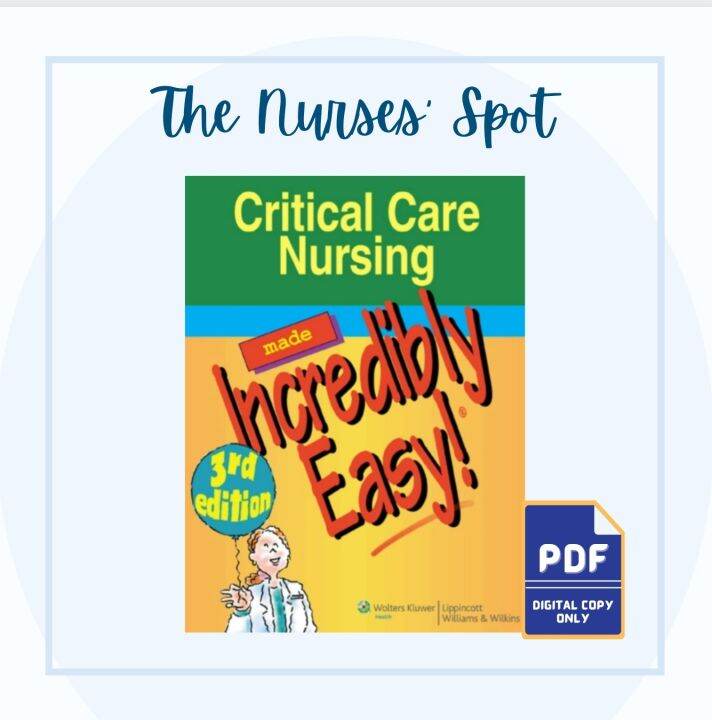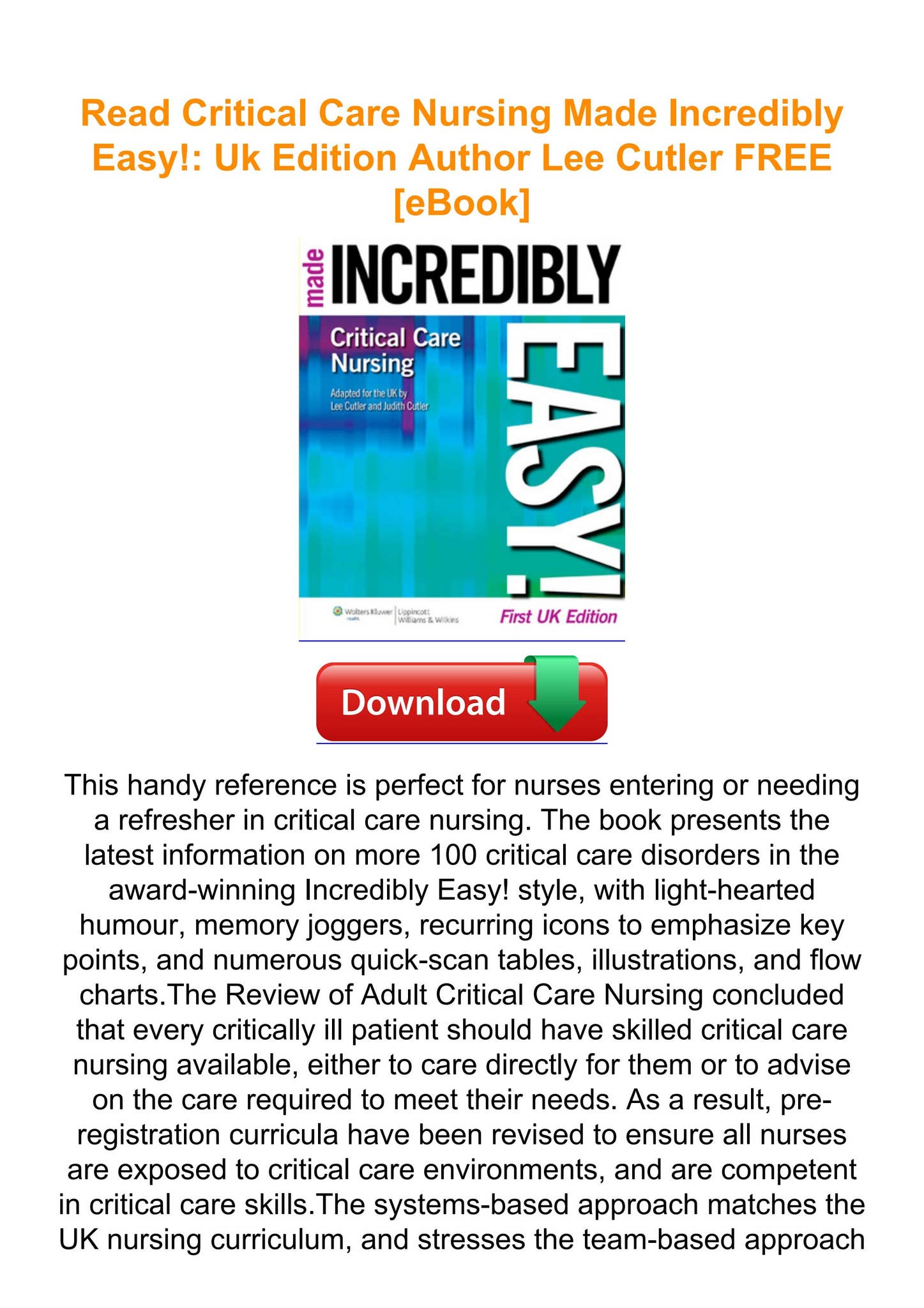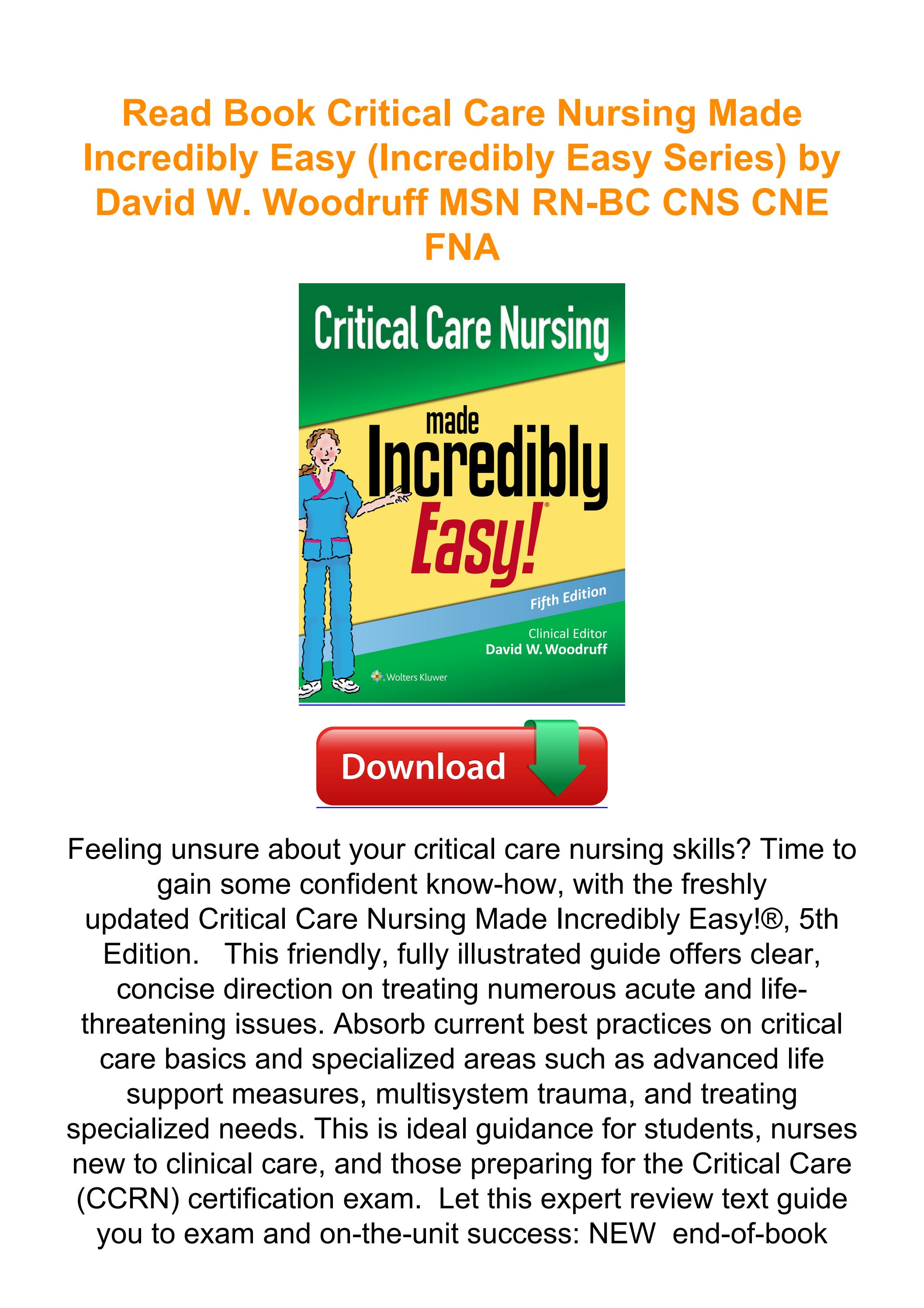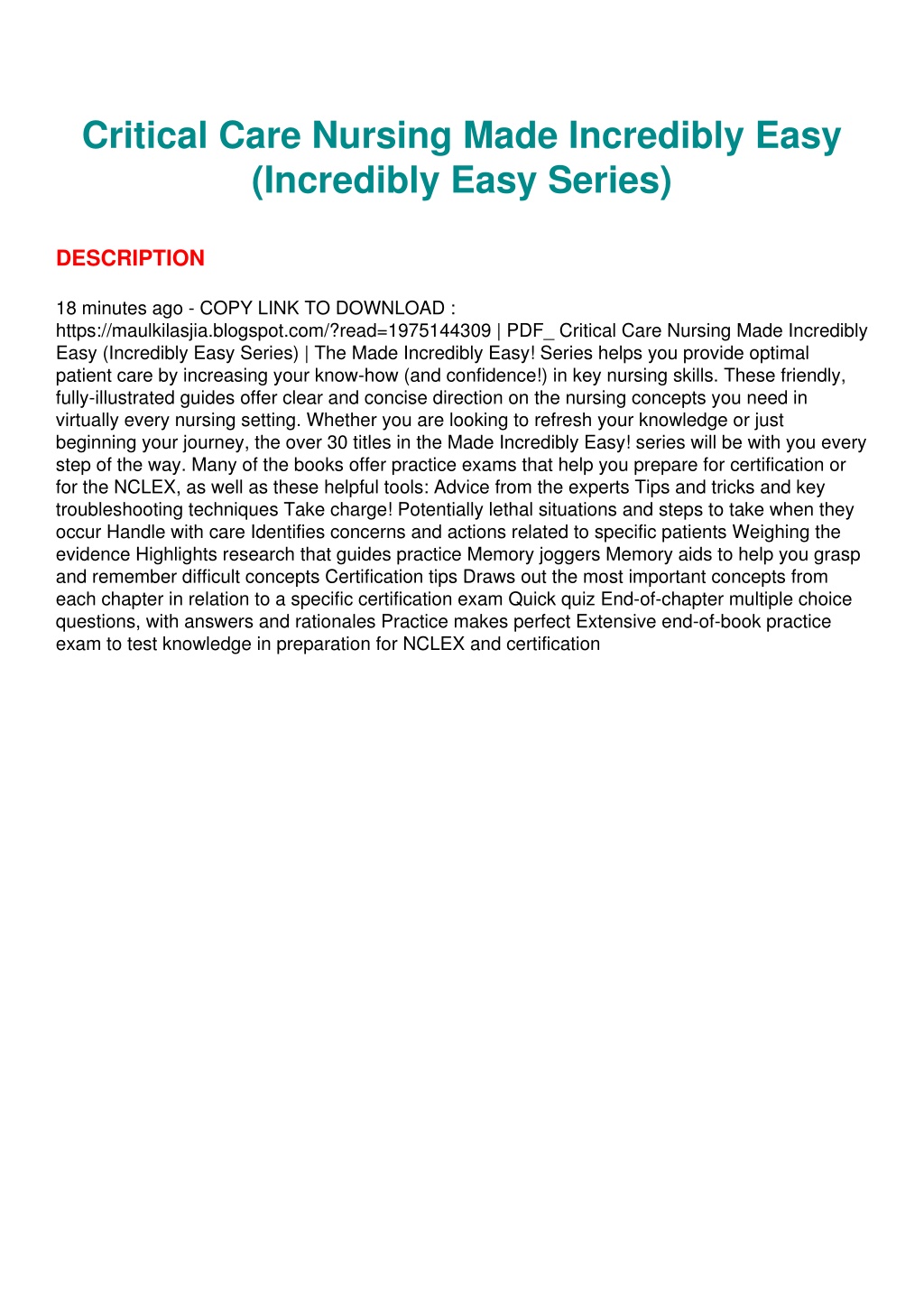Critical Care Nursing Made Incredibly Easy

Critical care nurses face unrelenting pressure. New research indicates a significant gap exists between ideal training and the realities of the ICU, highlighting the need for innovative educational resources.
The Crisis in Critical Care Education
A recent study reveals that nearly 60% of newly licensed nurses feel unprepared for the complexities of critical care. The accelerated pace of technological advancements and the increasing acuity of patients exacerbate this problem. This leaves many feeling overwhelmed and seeking readily accessible, practical guidance.
"Critical Care Nursing Made Incredibly Easy" - A Potential Solution?
A newly updated edition of "Critical Care Nursing Made Incredibly Easy" aims to bridge this educational gap. The book, designed for both students and experienced nurses, focuses on delivering essential information in a clear, concise, and easily digestible format.
Published by Wolters Kluwer, the resource emphasizes practical application and quick access to vital clinical information.
Key Features and Updates
This latest edition incorporates crucial updates in line with current best practices. It covers a wide range of topics, including hemodynamic monitoring, mechanical ventilation, and management of various critical care conditions. The book also features updated content on sepsis management based on the most recent guidelines.
Specific updates include expanded coverage of ARDS (Acute Respiratory Distress Syndrome) and novel therapies.
Who Benefits Most?
The primary target audience includes nursing students embarking on their critical care rotations. Experienced nurses looking to refresh their knowledge or learn about new technologies will also find the resource valuable.
The book is particularly useful for nurses transitioning to critical care from other specialties.
Content and Structure
The book employs a user-friendly format with clear diagrams, flow charts, and mnemonics. It uses a building-block approach, starting with foundational concepts and progressing to more complex topics. Case studies and real-world examples are integrated throughout to enhance understanding.
Key topics are broken down into manageable chunks, making it easier to retain information.
Quick-reference guides and tables are provided for immediate access to essential data during patient care.
Expert Opinions and Feedback
Early reviews suggest the book is well-received by both educators and clinicians. Many appreciate its comprehensive yet approachable nature.
Dr. Emily Carter, a critical care educator, notes that the book effectively simplifies complex concepts.
She highlighted that
"The easy-to-understand language and practical examples make this an invaluable resource for nurses at all levels."
Accessibility and Availability
The book is available in both print and digital formats. It can be purchased through major online retailers and bookstores. The digital version offers enhanced features such as searchability and interactive elements.
Bulk discounts may be available for institutions.
Implications for Patient Care
Improved nurse education can directly translate to better patient outcomes. Nurses equipped with the necessary knowledge and skills are better prepared to recognize and respond to critical changes in patient condition. This can lead to reduced complications, shorter hospital stays, and improved survival rates.
Effective critical care nursing is paramount to positive patient outcomes.
Ongoing Developments
The publishers plan to release supplemental online resources to accompany the book. These resources may include video tutorials and interactive quizzes.
Continuous updates are planned to reflect evolving best practices in critical care.









![Critical Care Nursing Made Incredibly Easy [Best!] Critical Care Nursing Made Incredibly Easy 'Full_Pages'](https://www.yumpu.com/en/image/facebook/63510680.jpg)








